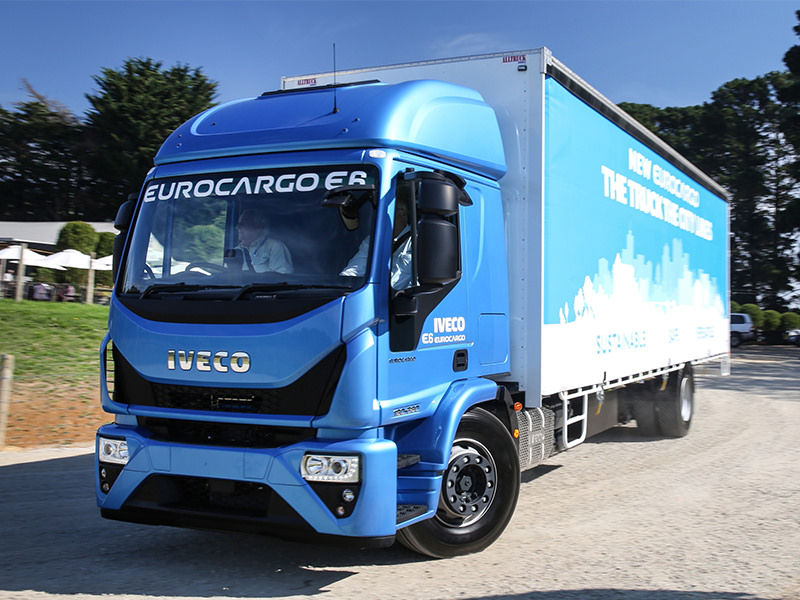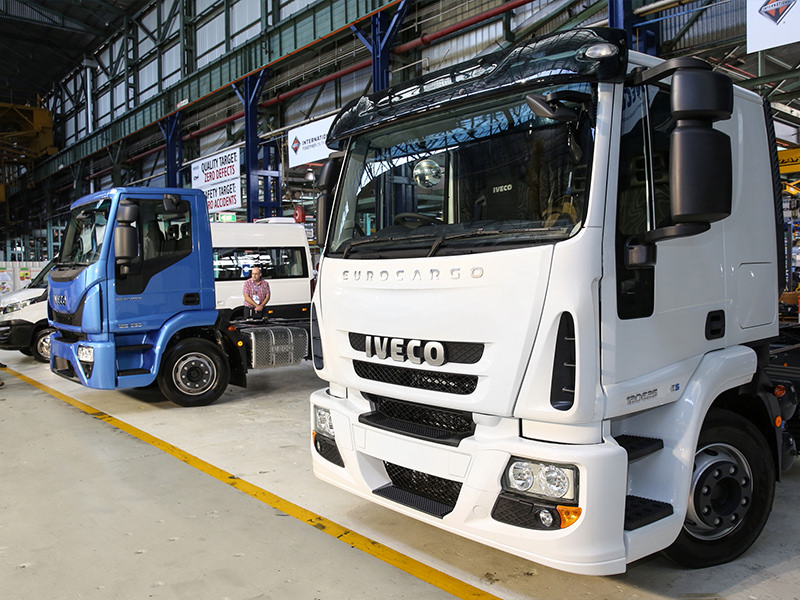There’s no doubt the Euro 6 version of Iveco’s medium-duty Eurocargo brings an advanced level of technical refinement to local and regional distribution work
 |
|
Iveco’s Euro 6 Eurocargo. A model for niches rather than big numbers.
|
There’s no doubt the Euro 6 version of Iveco’s medium-duty Eurocargo brings an advanced level of technical refinement to local and regional distribution work.
Even so, life won’t be easy because when it comes to the lighter ends of the truck business, if you’re not Japanese, you’re just fighting for scraps.
That said, Iveco certainly isn’t alone in its bid to offer the market something outside the Japanese square.
Volvo, MAN, DAF and Mercedes-Benz have been toiling in the medium-duty mix for many years but individually and collectively, the numbers tell a tale of scant success for all European brands.
In the first half of this year, for instance, continental contenders accounted for a threadbare 5.6 percent of the total medium-duty market.
In other words, just 188 of the 3322 medium-duty trucks delivered to the Australian market up to the end of June bore a European badge.
Only 42 of them were from Iveco.
Still, you have to admire the brand’s determination.
 |
|
Iveco will initially offer both Euro 5 (foreground) and Euro 6 versions of Eurocargo.
|
Euro 6 Eurocargo
Offered alongside its Euro 5 counterpart, the Euro 6 Eurocargo effectively adds another brick in the wall of Iveco Australia’s obvious intention to offer something for everyone – from the lightweight Daily to the latest Eurocargo, the ever-reliable ACCO and the flagship Powerstar and Stralis models.
The latest Eurocargo – Europe’s 2016 International Truck of the Year – was unveiled in Australia a few months back with three key models.
All 4×2 rigids, they are the ML120, ML160 and ML180 with respective gross vehicle weight ratings of 12, 16 and 18 tonnes, and each available in day cab, sleeper (with a high roof option) and crew cab layouts.
Powering all versions is Iveco’s latest 6.7 litre Tector 7 turbocharged six cylinder engine, using high pressure common-rail fuel injection.
The ML120 model produces 250 hp (185 kW) and 627 lb ft (850 Nm) of torque at 1250 rpm, while the ML160 and ML180 are both rated at 280 hp (206 kW) and 738 lb ft (1000 Nm).
Importantly, the Tector 7 achieves Euro 6 emissions compliance without requiring any EGR (exhaust gas recirculation) input.
Instead, the engine uses what Iveco calls its ‘Hi-SCR’ selective catalytic reduction system combined with a passive diesel particulate filter, or DPF.
The ‘passive’ tag simply means no driver involvement is required for regeneration of the particulate filter.
Coupled to the engine is a ZF nine-speed overdrive manual transmission with a dash-mounted gear shift or the optional Allison S3000 five-speed automatic.
Critical for a truck intended for city and suburban work, access to and from the cab is made easy with well-placed steps and doors opening a full 90 degrees.
A major make-over on the inside sees a quality Isri suspension seat for the driver, practical placement of all controls and switchgear, a linear dashboard design featuring an electronic anti-glare instrument panel, and a relatively unobtrusive engine tunnel allowing the driver to move easily from one side of the cab to the other.
Underneath, the new models ride on a combination of parabolic springs on the front and electronically controlled air bag assemblies under the rear; two bags under the ML120 and four under the ML160 and ML180. Ride quality is first-rate.
Performance
Short drives of several models during the launch event were marred by an ML180 high-roof sleeperodel with a faulty power steering pump.
However, with faulty pump fixed and more than 7000 km on the clock, Iveco recently provided the same unit for a test run in and around Sydney’s dense western fringes.
This time ‘round, loaded to a gross weight just shy of 14 tonnes, the truck did most things exceptionally well and it didn’t take long to form a distinct liking for the way this model does its business.
For starters, there’s a gentle firmness about the steering which gives the truck a positive sense of direction at any speed while in performance terms, the Tector engine’s relatively modest displacement delivers brisk throttle response and a level of tenacity which can certainly surprise.
And surprise it did on the run up the brutal 13 percent grade of Bellbird Hill on the unforgiving Bell’s Line of Road in Sydney’s far west.
On the other hand, it wasn’t quite so impressive on the downhill run where the slight displacement does little to generate a high level of retardation from the exhaust brake.
That aside, and as expected, general stopping performance with the electronic disc brake package is superbly smooth and strong.
As for the nine-speed manual shifter, it’s a ZF box operating on a double-H pattern with a dash-mounted lever falling easy to hand and delivering light, precise shift movements.
What’s more, given the engine’s broad rev range and slick response, skip shifts in low range were easily accommodated.
Other factors
As for the high-roof sleeper cab, it is arguably the best equipped standard sleeper cab in the medium-duty 4×2 rigid class.
 |
|
Euro 6 Eurocargo comes in day cab and high-roof sleeper forms.
|
Sure, calls for a cab such as this on a dedicated single-drive rigid chassis may be few and far between but there’s no denying that in the right application (overnight regional runs, for instance) the high-roof sleeper adds a small window of opportunity for Iveco.
I’d also argue that given the results shown by the truck’s on-board information system, it is also one the most fuel efficient medium-duty models in the business with an excellent return of 4.39 km/litre (12.4 mpg) over widely varying terrain and several bouts of dense traffic.
However, for shorthaul delivery duties in cities and the ‘burbs, the day cab version with the optional Allison auto would almost certainly be a far more practical and versatile alternative to the high-roof manual model.
After all, both day cab and sleeper versions are on a generous 6.57 metre wheelbase, with the day cab unit also offered on a shorter 5.67 metre spread.
So in the final wash-up, while the Euro 6 Eurocargo test truck was undeniably impressive in so many ways, you’re left wondering how much call there is for a high-roof sleeper cab with a multi-speed manual box in the 4×2 rigid class.
Not a lot, I’d suggest.
Nonetheless, there are certainly those niche applications such as overnight regional runs where a truck of this type would suit some operators, particularly with those freight customers who demand top-shelf emissions compliance.
Like I said, in the right application, there’s a lot to like.


